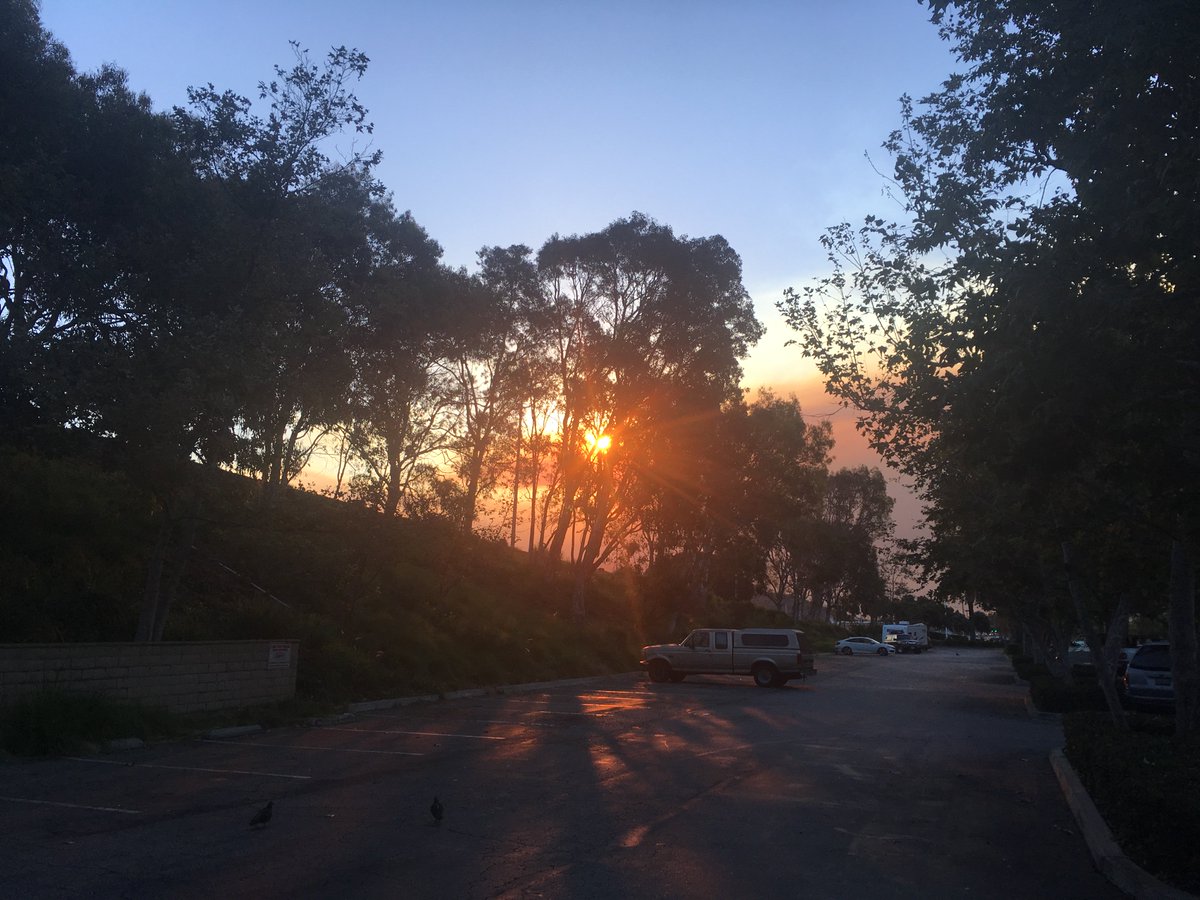The 'rocks' are made of 100% animal hair/wool. Imported from Africa
Trompe-l'œil then, I hope no animals were harmed in the process.
Bear, there is something to be said about being well trained in audio and overly critical. I haven't gone to see a live show for some time, I just have a hard time enjoying the music, I just clue into those things that are wrong and it drives me crazy, but I can't turn that off. So sometimes I wish I was just one of the crowd who can just enjoy the music with abandon, nothing to compare it to, no high standards. I know if I went to a show and my ex brother-in-law was doing a show and doing the mixing I would enjoy it more than most commercial venues, he has done pro audio since I was in high school and I guess I just have become jaded. It isn't always a good thing to be hyper critical in listening skills.
RNM, nice house, enjoy the music and don't listen to the critics, you will be the only critic you need to satisfy.
RNM, nice house, enjoy the music and don't listen to the critics, you will be the only critic you need to satisfy.
Bear--I think I misworded my intent. I don't think you're being insincere.
We certainly have our differences in perspective, and I do hope you get the fun/satisfaction you're wanting out of your system.
We certainly have our differences in perspective, and I do hope you get the fun/satisfaction you're wanting out of your system.
My little house has dodged 3 big fires now. Thanks for asking! This was taken outside my front door a few days ago.
made for a colorful sunrise, in malibu -


Attachments
perhaps our testing of many loudspeakers with test tones is just not enough WORST CASE, compared to difficult musical material, and speaker systems need much more momentary peak current than we normally suspect.
😱 Seriously, you don't know how to measure momentary peak current to speakers with program material?? You even have early WATTs, I'd expect them to be about as peaky currenty as nearly anything this side of Apogees. Or are you just saying that no one else knows how? (not sure which is more odd to be saying)
Yes. The point is: it is harder to do it with latfet than with hexfet or bjt.
I believe I will be able to know if it is true, by/from simulating the circuit. Do you think it is possible?
Basic symmetrical differential, one differential per rail and a symmetrical VAS (one transistor/rail..) that drive directly 3 pairs of 2SK135/2SJ50, i think that i posted the schematic here at some point, i ll look in my older PC drive or i ll eventually redraw it...
That being said with a 4R load a single output pair will see quite a high voltage drop unless the front end is supplied with a higher voltage than the OS, i guess that some people who used such devices didnt pay attention to this detail, that is, that the 1R residual drain/source resistance can be achieved only if gate voltage is higher than drain voltage by a few volts.
Wahab, do you know that I originally designed that circuit topology (with bipolars) back in 1968? That is almost 50 years ago. You are talking about paralleling three 7A power jfet pairs. My JC-1 uses nine 15A bipolar pairs. That means that I have more than 6 times peak current. In my lessor designs, I might just have 2 to 4 times the peak current that you are designating. Do you see the problem here? You underestimate the real peak current of many audio speaker systems.
Wahab, do you know that I originally designed that circuit topology (with bipolars) back in 1968? That is almost 50 years ago. You are talking about paralleling three 7A power jfet pairs. My JC-1 uses nine 15A bipolar pairs. That means that I have more than 6 times peak current. In my lessor designs, I might just have 2 to 4 times the peak current that you are designating. Do you see the problem here? You underestimate the real peak current of many audio speaker systems.
Must admit that i dont know from where the topology originate but since you pretend to be the first one to have used it ll believe you as the only other references i have are from Motorola, SGS Ates and Fairchild, although all date from the early 70s.
As to underestimate the peak real current not sure about this, or rather i would say that you are underestimating the extreme rugness of TO3 Hitachi laterals, FTR i ll give you a few hints that i got from this amp.
Supply voltage was originaly +-60V but due to the main being increased by 5% over the years and that i m close to the supplier transformer it ended being +-64V.
I used the amp only as PA for my keyboards or for sound reinforcement in concerts, useless to add that it was in high ambiant temps and often with 4R loads and it worked flawlessly during 20 years, at wich point i decided to use it as hifi amp with a +-22V supply as well as with a few basic mods, because i forgot to mention that it had no miller compensation during all thoses years, it was the OS input capacitance that was used quite efficently as shunt compensation, of course with the latter usage it s no more peak currents underestimated according to your metric...😉
Last edited:
The real paranoid would ask himself if there's someone with a West End apartment (Shaftesbury Avenue), who has a painting of your Bangkok street on his wall.
🙂🙂 Very good to know the location/street. It is a painting by an Italian named Alessandro Giusberti. Called Theatre Gelgud. Bought in a gallery in Seattle, Washington; USA.
-Richard
I designed it when I was working in the Audio Division of AMPEX. I offered it to the audio department, but they thought it too complex, and too costly. They preferred a single input transistor, single second stage transistor with a bootstrapped load, and a push pull output stage. However, Mark Levinson heard my Class A version driving my k-horn in 1968 and he hired me 5 years later based on his listening experience.
I was not the only person to design the complementary differential input stage, Jon Iverson of Electroresearch did it as well, and apparently SAE did it as well, but we did not know each other at the time.
By the way, OF COURSE the Lateral mos fets are reliable. That is their greatest advantage, but they have lousy current drive and they take all kinds of drive voltage to get to their maximum of 7A as well.
I was not the only person to design the complementary differential input stage, Jon Iverson of Electroresearch did it as well, and apparently SAE did it as well, but we did not know each other at the time.
By the way, OF COURSE the Lateral mos fets are reliable. That is their greatest advantage, but they have lousy current drive and they take all kinds of drive voltage to get to their maximum of 7A as well.
Trompe-l'œil then, I hope no animals were harmed in the process.
yes, even up close, people think they are rocks.
maybe just shaved the animals for the wool from time to time. or they ate them?
In Bangkok, I DO have a stone similar in size and look. Many dont believe it is a real stone until they try to move it.
It took 4 young men to deliver and carry it to its place in the room.
-RNM
Last edited:
Wow - you have reliable ears and you can do remote psychoanalysis. Very impressive!
Too good to be true. He must be an old member of the forum hehe 😀
Wahab, I should not expect you to know my extensive background, but I have been designing amps for 50 years. My first design did NOT use the complementary differential, but complementary single devices (current feedback) like many here like, even today.
The complementary differential input stage came to me in 1968, when my main task was designing a phased locked motor drive for the Ampex AG440, so I designed the amp for myself. I did it because I wanted to do something better than my Dyna tube amps if it was possible (it was), but I made a few mistakes in those early years, (like lowish slew rate, in order to get absolute output stability with any load (without a coil, that was something new) and I overcompensated it. I didn't use any driver transistors either, so I had a complementary current driver, rather than a voltage driver, which is usually preferred. No, it did not come easy or at once.
However, I have pointed this out to you, because you seemed to not understand that I might know a bit more than most people about the dynamic current needs for many multi-driver loudspeakers. I worked with Matti Otala on the problem back in the 1970's, 10 years after my work at AMPEX. That is where I found most of the potential problems with output drive current. Matti wrote several papers for the AES on this, check it out.
Finally, I agree that the WATT 1 loudspeakers are a tough drive due to a design oversight by Dave Wilson, but both the Otala inspired Electrocompaniet and my amps can easily drive it, because we both have enough output current (without protection) to do it correctly.
The complementary differential input stage came to me in 1968, when my main task was designing a phased locked motor drive for the Ampex AG440, so I designed the amp for myself. I did it because I wanted to do something better than my Dyna tube amps if it was possible (it was), but I made a few mistakes in those early years, (like lowish slew rate, in order to get absolute output stability with any load (without a coil, that was something new) and I overcompensated it. I didn't use any driver transistors either, so I had a complementary current driver, rather than a voltage driver, which is usually preferred. No, it did not come easy or at once.
However, I have pointed this out to you, because you seemed to not understand that I might know a bit more than most people about the dynamic current needs for many multi-driver loudspeakers. I worked with Matti Otala on the problem back in the 1970's, 10 years after my work at AMPEX. That is where I found most of the potential problems with output drive current. Matti wrote several papers for the AES on this, check it out.
Finally, I agree that the WATT 1 loudspeakers are a tough drive due to a design oversight by Dave Wilson, but both the Otala inspired Electrocompaniet and my amps can easily drive it, because we both have enough output current (without protection) to do it correctly.
Bear, there is something to be said about being well trained in audio and overly critical. I haven't gone to see a live show for some time, I just have a hard time enjoying the music, I just clue into those things that are wrong and it drives me crazy, but I can't turn that off. So sometimes I wish I was just one of the crowd who can just enjoy the music with abandon, nothing to compare it to, no high standards. I know if I went to a show and my ex brother-in-law was doing a show and doing the mixing I would enjoy it more than most commercial venues, he has done pro audio since I was in high school and I guess I just have become jaded. It isn't always a good thing to be hyper critical in listening skills.
RNM, nice house, enjoy the music and don't listen to the critics, you will be the only critic you need to satisfy.
It's important to be able to divorce the performance and/or the musical composition & execution from the "sound"... within reason. Ear plugs are a must for most amplified "concerts" and "clubs" imo. Helps EQ out the hearing impaired sound man and the horrible PA system... 😛
Should you get both a great sound system/sound man AND a great performance? Wocka-wocka!!
One reason that Grateful Dead concerts going way back were so much fun was that there was hardly any distortion in the PA and sound... they were so ******* clean in the Fillmore East, like a giant beast was released into the room!! Extraordinary, probably would stand up today, if you had the time machine repaired. 😛
i think that i posted the schematic here at some point, i ll look in my older PC drive or i ll eventually redraw it...
Looking forward to seeing it, thanks.
Basic symmetrical differential, one differential per rail and a symmetrical VAS (one transistor/rail..) that drive directly
Hmmm... sounds too simple. There are many variations of that scheme, including the famous Elektor's Crescendo. I think may be the one in Planteve's French site is a new variation I haven't tried. I have negative feeling towards these designs.
drive directly 3 pairs of 2SK135/2SJ50,
yes, I wish I could use at least 3 pairs. But I use only 2. Too expensive, especially I'm looking for multi amping system.
That being said with a 4R load a single output pair will see quite a high voltage drop unless the front end is supplied with a higher voltage than the OS
I do this too with 2 pair.
Shakti - with John McLaughlin, Ravi Shankar, etc... did a live concert, available on CD, now way back in the day. They used Quad 57 speakers across the front of the stage as the "PA".
😀
😀
By the way, OF COURSE the Lateral mos fets are reliable. That is their greatest advantage, but they have lousy current drive and they take all kinds of drive voltage to get to their maximum of 7A as well.
Basically they have low threshold voltage, mine are at about 0.1V, with three parralleled device transconductance is tripled, so even with a single supply for both FE and OS they get quite close from the rail voltages.
As for reliability the first such amp, the Hitachi HMA7500, was tested at nominal powers with a 1KHz sine for 1/2 hour at 8 and then at 4R by a french magazine, on the latter impedance it delivered 110W/channel without failling, that s roughly 7A peaks and there was a single latfets pair, that s the big difference with bipolars wich can barely sustain half their rated currents in such conditions (they also did tests on capacitive loads), besides above 100mA they have negative temp coefficient, i used a simple trimpot to set the bias and it proved reliable.
However, I have pointed this out to you, because you seemed to not understand that I might know a bit more than most people about the dynamic current needs for many multi-driver loudspeakers. I worked with Matti Otala on the problem back in the 1970's, 10 years after my work at AMPEX. That is where I found most of the potential problems with output drive current. Matti wrote several papers for the AES on this, check it out.
Finally, I agree that the WATT 1 loudspeakers are a tough drive due to a design oversight by Dave Wilson, but both the Otala inspired Electrocompaniet and my amps can easily drive it, because we both have enough output current (without protection) to do it correctly.
Although i agree that current capability is important i would also point that you had to deal with devices that were perhaps not as good as what was released in the late 70s by japanese firms, not counting the quasi normless speakers you are talking about..
Looking forward to seeing it, thanks.
Hmmm... sounds too simple. There are many variations of that scheme, including the famous Elektor's Crescendo. I think may be the one in Planteve's French site is a new variation I haven't tried. I have negative feeling towards these designs.
Same as Crescendo but without cascoded VAS.
They also relied in latfets input capacitances as shunt compensation but they made a few mistakes in their design that lead to instability most, if not all, of the time.
Overall these are convenient although i got back to the single input differential for very low distorsion designs, and when i say low i mean residuals (at 1KHz signal) below -150db at rated power...
yes, I wish I could use at least 3 pairs. But I use only 2. Too expensive, especially I'm looking for multi amping system.
You know that a multi way system require all channels to have the same power..?.
I mean if the bass channel is 100W then the mid and high must also be 100W each, otherwise this will be inferior to a 100W amp that drive a classic 3 way speaker..
Last edited:
Multiamping CAN reduce the peak current drive requirements of an individual amp. All my latest amps use Toshiba or Sanken output bipolars, the biggest, fastest, and most rugged that can be purchased.
With bipolars a triple EF is mandatory or else it s about useless to use very good, and hence expensive, devices.
Basically they have low threshold voltage, mine are at about 0.1V
That's the lowest that I know. Ime, the lower sounds better. I think people should measure theirs, especially with the new cheap offerings.
Overall these are convenient although i got back to the single input differential for very low distorsion designs, and when i say low i mean residuals (at 1KHz signal) below -150db at rated power...
If 'residuals' means harmonics, that is very strange (if not wonderful). -150dB with such a simple topology is suspicious.
You know that a multi way system require all channels to have the same power..?
Have heard but not sure about it. I thought that it is just to make things easier to design. I guess that if it is approached like speaker design, meaning that everything (such as individual drivers behavior, gain structure, etc.) is taken into account, then it shouldn't matter.
I mean if the bass channel is 100W then the mid and high must also be 100W each, otherwise this will be inferior to a 100W amp that drive a classic 3 way speaker..
I will observe this in the future.
- Status
- Not open for further replies.
- Home
- Member Areas
- The Lounge
- John Curl's Blowtorch preamplifier part II

